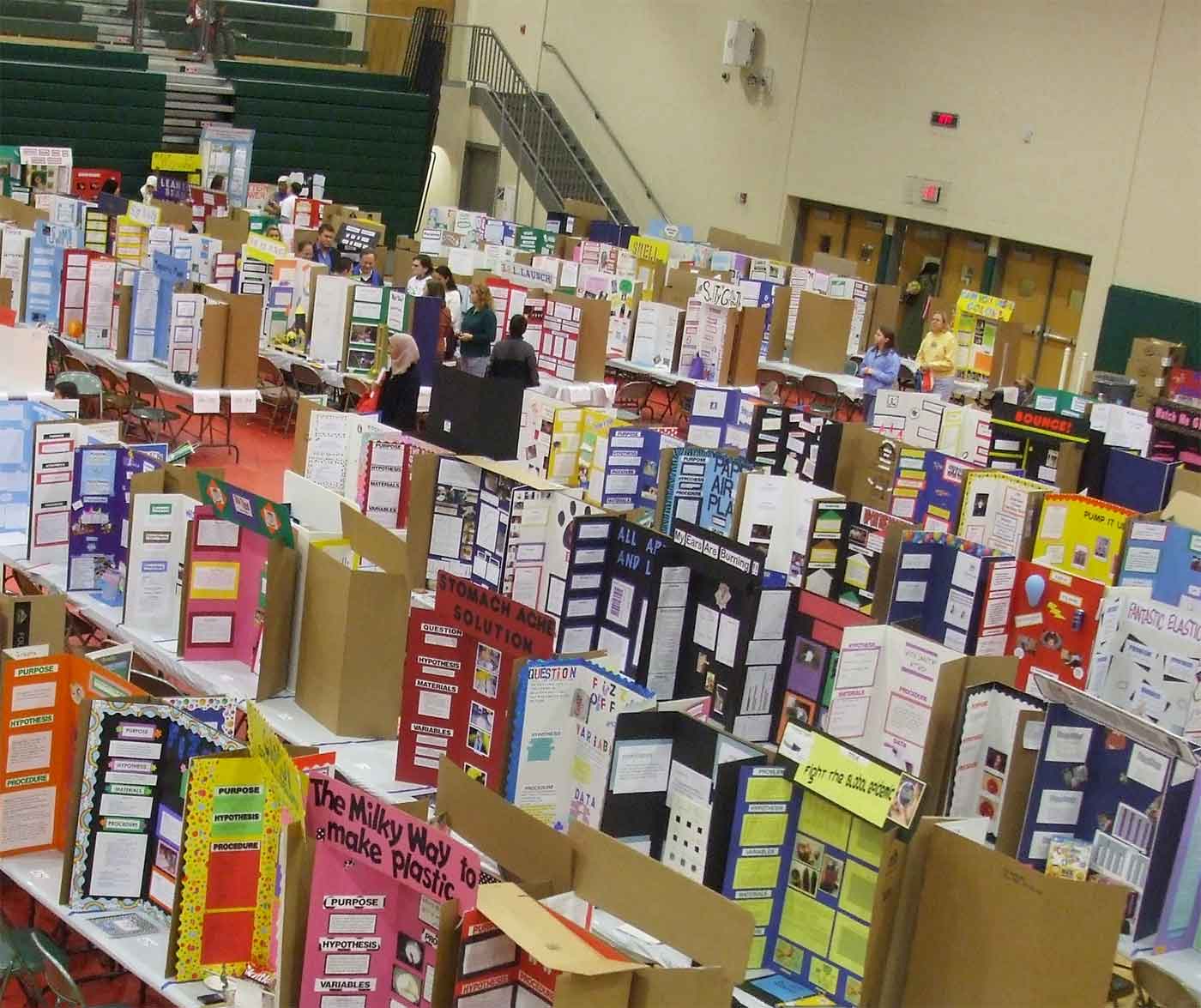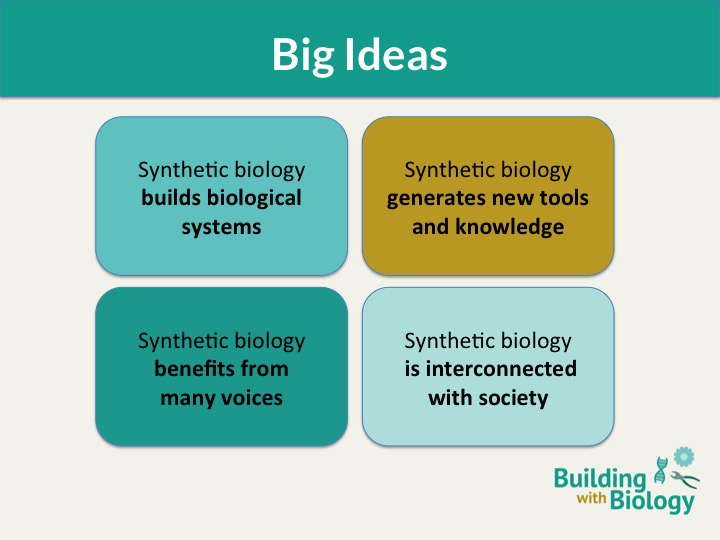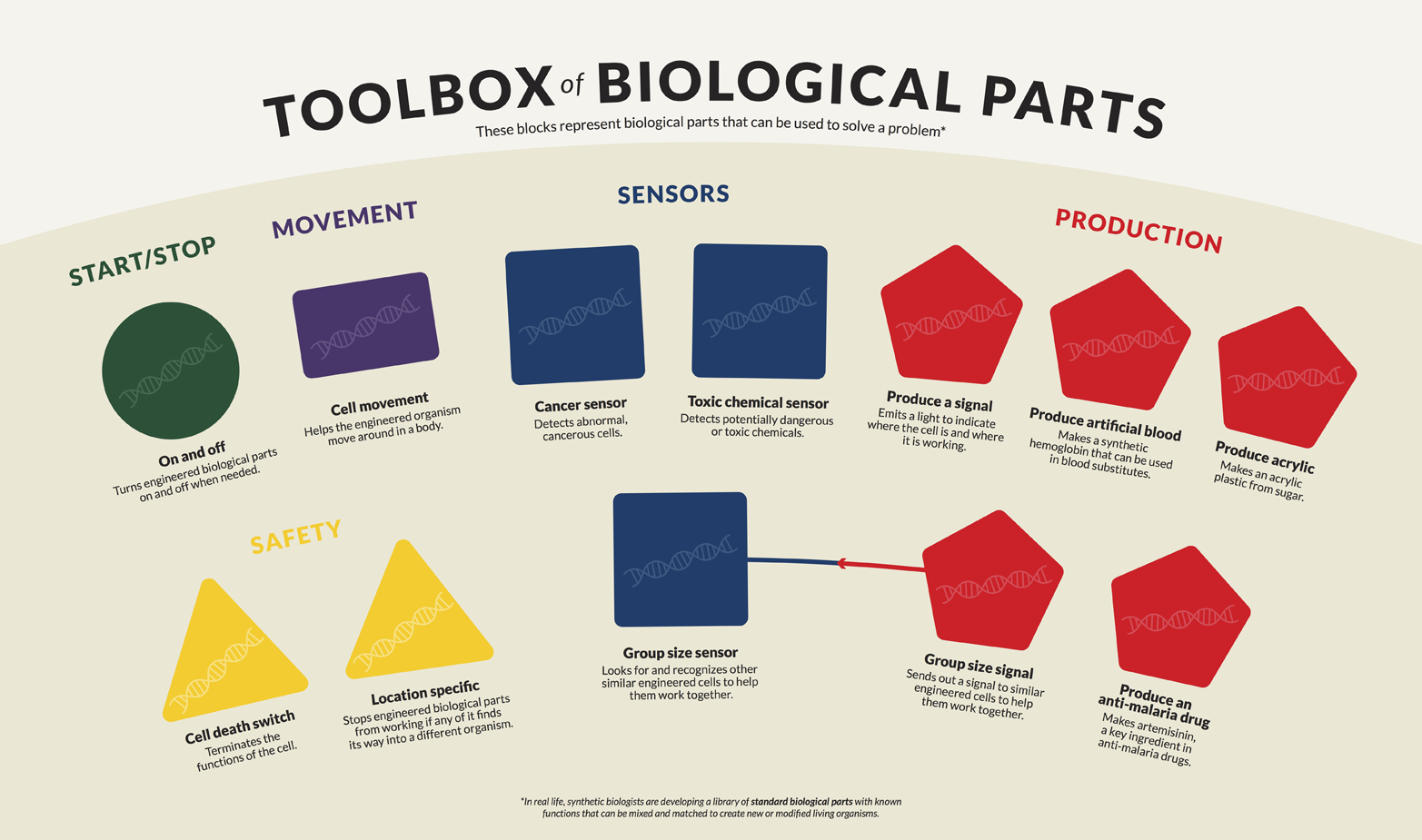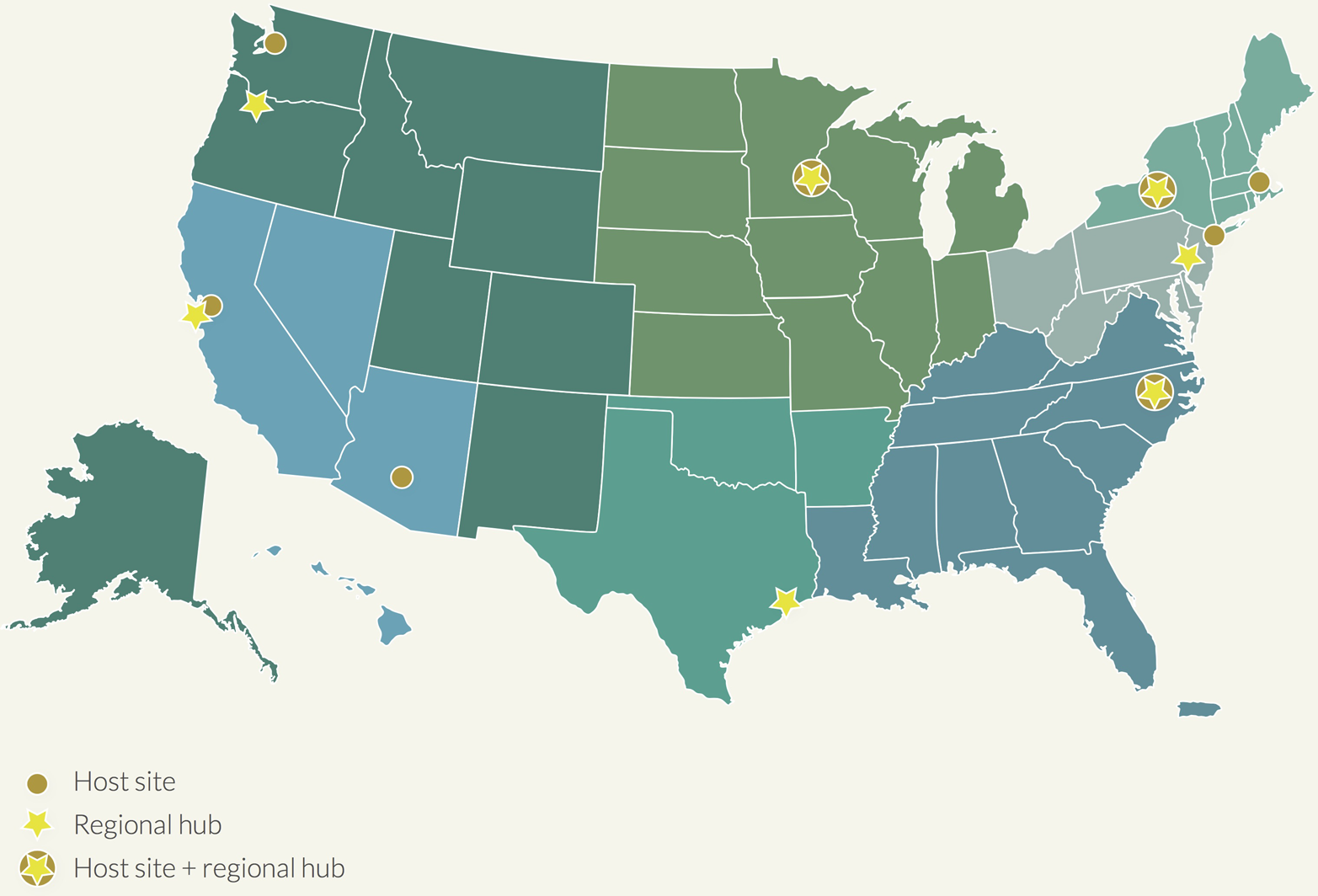Building with biology
If a civically-minded synthetic biologist wants to engage with the public, where do they start?
 Science fair (source: Rich Bowen via Flickr)
Science fair (source: Rich Bowen via Flickr)
From CRISPR in the New York Times to George Church on The Late Show, it seems that synthetic biology is all over the headlines lately. But what does your family—or your neighbor—need to know about biological engineering to make wise decisions? How can and should their values and visions for the future shape what synthetic biology becomes?
Synthetic biology is evolving as a field and an industry. But its trajectory is already being shaped by drivers, decisions, and dreams of communities well beyond those that identify as synthetic biologists. And while there is a lot of talk about preparing the world for synthetic biology through better communication, too often our actions suggest the goal is to get other people to better understand the technology. That is, if they just understood its potential and practice, we’d all chill out and be on the same page. But we know this simply isn’t true.
Technology is part of the social world in which our values and preferences often conflict, and we need to contend with the inevitable choices involved. As with politics, trust in technologies and institutions is not engendered by belittling the public (often called the “deficit model”). Rather, it is facilitated by actively listening and reflecting—engaging—with hopes, fears, and values, including our own as members of the public.
So, that might sound right, but what do you actually do about it? If a civically-minded synthetic biologist wants to engage with the public, where do they start?
This article introduces one ongoing project in implementing US public engagement with synthetic biology. We are members of a growing group halfway through a two-year experiment across the nation, and we hope to convince you to join us in improving its design.
Cultivating a Community of Public Engagement Practice
Six years ago, we found ourselves grappling with daunting questions about the public role of science and scientists. As a PhD student, a university professor, and a science museum professional, we had different communities—peers in science and engineering, fellow students, and an invested public—but similar questions: who can and should decide what science and technologies are developed? For what ends? And by whom?
After meeting through local science events, we began discussing synthetic biology as an area in particular need of wider public engagement. Since the field’s aspirations raise fundamental questions about our relationship with nature and ourselves, it was just a matter of time before things got messy, so to speak.
Meanwhile, scientific communities beyond synthetic biology began recognizing a need to improve their approaches to science communication. The American Association for the Advancement of Science (AAAS) and their then-CEO Alan Leshner began highlighting the vital role of multidirectional dialogue among scientists and diverse publics. Likewise, science museum educators were seeking to refine their toolkit with innovative, informal pedagogies for engaging diverse audiences around complex scientific issues.
A boost to these efforts came nearly a decade ago when the National Science Foundation (NSF) funded the Nanoscale Informal Science Education Network (NISE Net). Through exhibits and programs at museums across the US, the 10-year effort engaged millions of visitors in learning about the science and societal implications of nanotechnology.
Fast forward to just over a year ago, and the field of synthetic biology has matured along with our careers. David Sittenfeld is leading museum engagement efforts, including NISE Net, within the Boston Museum of Science. Megan Palmer is leading policy research within a multi-university, publicly funded synthetic biology engineering research center (Synberc). Natalie Kuldell is leading a nonprofit venture in synthetic biology education (Biobuilder).
While our questions about the public role of science and technology were no less daunting, we had by then cultivated a diverse array of partners bringing complementary expertise to bear. They include the AAAS, with a wealth of expertise in science communication theory and practice and an important bridge to the scientific societies within and outside the synbio community; Synberc, which gathers a cohort of synthetic biologists in universities and companies around the country; the Association of Science and Technology Centers (ASTC) and NISE Net, which bring networks of science museums versed in informal science education; and BioBuilder, with deep expertise in pedagogy around biotechnology education.
These partners, and others, came together to form what is now called the Building with Biology project, formally known as Multi-Site Public Engagement with Science – Synthetic Biology. Our goal is to facilitate conversations between scientists and the public around the societal aspects of engineering biology. But a second major goal is to better understand the value of public engagement for scientists and museum professionals involved. One hypothesis is that we can all benefit from tools to understand and navigate the diverse values we bring to our work.
Thanks to support from the NSF, and many volunteers, we have been co-creating a suite of pilot engagement activities designed to facilitate conversations at hundreds of sites across the nation.
Co-Creating a Concept Map for Conversations
So where did we start?
From the beginning, the project partners tried to foster mutual learning. We began by bringing together practitioners (including both social and natural scientists and engineers) and museum professionals, to develop a set of “big ideas,” our best guess at core concepts people need to understand to engage with the field’s development. Now, anyone who has been in circuitous conversations about the definition of synthetic biology realizes this is no easy task. We went through significant revisions (and a few heated discussions) in the first year of the project.
Eventually a key theme emerged from our discussions: the need to treat synthetic biology as a hypothesis and a process. We are still exploring the best ways to engineer living systems—by evolution, design, or many hybrid approaches—and it was important to capture this diversity.
Figure 1-1 shows our “concept map.” Two ideas—that synthetic biology generates new tools and knowledge and that it enables new products—may seem intuitive. The other two may be a bit new.

The big idea that synthetic biology benefits from many voices is intended to convey the interdisciplinary nature of the field, and to convey the idea that making biology easier is both a means and ends. Efforts like the international Genetically Engineered Machine (iGEM) competition and do-it-yourself (DIY) biology movements have taught us that putting tools in the hands of many diverse communities seeds innovation.
The fourth big idea is that technology is inextricably coupled to societal values and involves benefits, costs, and risks. This is a critical idea and at the heart of the project. The idea is that we make choices about what technologies to develop, and these choices have repercussions.
From Concepts to Kits and Conversations
So what did we do with these ideas?
In early June, 200 physical kits will be sent to a mix of informal science education institutions, such as science centers, universities, and iGEM teams. Each kit contains a collection of hands-on activities and discussion forums, co-created by educators from 12 science museums around the country with partnering scientists from the synthetic biology community. Accompanying the activities are guides and training materials highlighting key concepts and techniques for holding conversations with different ages, and opportunities for mutual learning. The kit also contains materials about science communication and public engagement techniques for event hosts and scientists and resources for evaluating their conversations with the audience. Digital materials will also be available for anyone to download for free at the Building with Biology website starting in late May.
Just as synthetic biology is an interdisciplinary field bringing together varied skills and perspectives, our development process for the kits required input and feedback from a diverse group of stakeholders including physical and social scientists, educators, and science communication experts. We used this feedback to inform an iterative process of revisions, inspired by the engineering design process.
One element of the kits are hands-on activities. These will be familiar to museum educatiors and scientists alike and are designed to be facilitated by scientists and informal educators at museums and other sites. See Figure 1-2 for a photo from one of the pilot events last summer.
Tech Tokens, an activity created by museum educators at the Science Museum of Minnesota and synthetic biology partners at the University of Minnesota, is a great example of a hands-on activity that gets people talking with one another about an emerging technology. In this activity, visitors learn about and prioritize potential applications of synthetic biology (examples include next-generation biofuels, engineered insects to transform agriculture or fight disease, and new methods for producing life saving medicines). They’re given 10 tokens representing research and development funding that could help a technology mature and be adopted into future society. The facilitating scientist asks them to allocate tokens to technologies they find most compelling, giving them the opportunity to share their values and priorities with scientists who may one day engineer some of these biotechnologies. The scientist then asks them to consider the perspective of a character who may bring a different set of priorities and values, such as a doctor in South Africa, a European farmer, or the president of the United States. In thinking about the technologies that these different people might prioritize, visitors and scientists consider together. One of the big ideas that drove the development of this activity is that “synthetic biology benefits from many voices.” By this, we mean that emerging technologies bring up questions that science can inform but cannot answer on its own, and that societal decision-making around such questions is enriched by the inclusion of multiple and varied perspectives.
Another hands-on activity is the Kit of Parts (Figure 1-3), created by scientists at the University of Pennsylvania and educators at the Franklin Institute. In the first part of the activity, the visitor selects a problem that could be solved through synthetic biology, such as how to stop environmental damage, manufacture renewable plastic, produce an antimalarial drug, or develop a new type of cancer therapy. This initial step of choosing a problem to solve creates another opportunity for scientists to hear about the priorities, values, and concerns that museum visitors bring to potential applications of synthetic biology. It also helps to model the prominence of the engineering design process in the field. After the visitor decides on a problem to solve, the facilitating scientist then guides the visitor through a design process to engineer a cell, modeled from a set of child’s blocks, that represents a registry of standardized biological parts. Examples of parts that visitors can select include an on/off switch, an array of biological sensors, a part for cell movement, a cell death switch, and a number of production functions. Visitors consider the tradeoffs of factors such as complexity, cost, control, and safety as they engineer an organism to help solve the societal problem they have selected, learning that design decisions inherently reflect a mix of social values, priorities, and perspectives.

The second kind of conversation we’re targeting through the Building with Biology project is what we call a “forum,” a more deliberate kind of discussion in which scientists are not facilitators, but participants. These forums allow scientists and members of the public to exchange ideas and learn from one another in a different way than they do in the hands-on activities. Every kit will include materials for a forum called “Should We Engineer the Mosquito?” This program facilitates a conversation about the question of whether and how mosquitos should be released to combat vector-borne disease. Participants learn about the potential benefits, risks, costs, and considerations of mosquito engineering, thinking about the perspectives of community members in Kenya facing the threat of malaria. Forum participants consider questions such as whether or not to employ a gene drive technology, what entity should oversee a release, and how to monitor success and environmental impact. In thinking about these questions, members of the public and scientists have the opportunity to learn from one another about the values and perspectives that are inherent to such socioscientific issues. Another forum, on the widely discussed CRISPR technology for gene editing, will be made available for digital download on the project website.
These activities and forums were piloted in the summer of 2015 at eight science centers around the nation and revised in response to the evaluation data. The results from the pilot year are quite encouraging: 97% of visitors at the pilot sites agreed or strongly agreed that they enjoyed the Building with Biology events. Attendees learned about synthetic biology and said that the experience increased their interest in learning more about the connections between synthetic biology and their daily lives. Scientist volunteers at the events said that participating in the events increased their skills and interest in public engagement with science. Participating scientists said they learned that the public is open to conversations about synthetic biology and that museum visitors were able to have complex and rich conversations about the field and its societal implications. The 200 Building with Biology events this summer will allow the project team to learn much more and help to create a roadmap for future work.

Continuing the Conversation
Our early goal was to find out what’s on people’s minds when we talk about synthetic biology, and so now we ask: how well are we doing that? In a few months, physical kits will be sent to nearly 200 locations nationwide. They will provide all the materials and instructions we’ve developed so communities can hold some structured conversations about the field of synthetic biology and its societal implications. To recruit partners, we’ve tapped into our scientific and museum networks, our social media circles, and word of mouth. We have participants that range from the Arecibo Observatory in Puerto Rico to the Open Bio Labs in Virginia, but almost certainly we could do more to recruit and reach the broadest community. So we’re looking for better ways to spread the word.
We’re also looking for appropriate measures to gauge how well the conversations are going. As a condition for receiving the kits, we’ve asked for a commitment to run an engagement event and provide feedback about the conversations among scientists and public audiences. We’re developing an online reporting system to gather information, and we’ve included media tools to help keep participants engaged and connected. To further develop the materials, pre- and post-surveys and interviews about the engagements will be used. Additionally, there is an opportunity to evolve the materials we’ve developed by inviting iGEM teams and BioBuilderClubs to “hack” the kits and use them in their outreach efforts. Such a partnership strikes us as a win-win because it leverages local wisdom and encourages work that can be reused.
These new kits and forums offer a useful template for future work. Synthetic biology itself is an unfolding field, and we will need increasingly diverse ways to engage in conversations about it. What other constructive dialogs for synthetic biology can be imagined by us and by others? Just as synthetic biology is a working hypothesis about engineering living systems, so is our strategy for enhancing public engagement in this arena. We are hopeful that our early efforts to include engagement in public communication about synthetic biology will support other efforts like it in the future.
